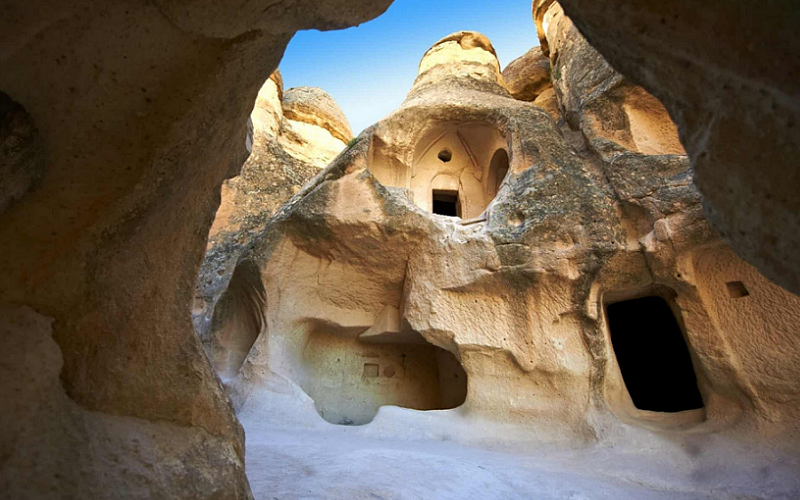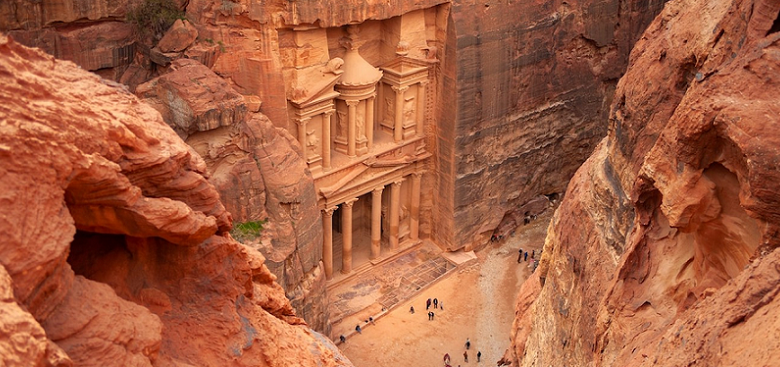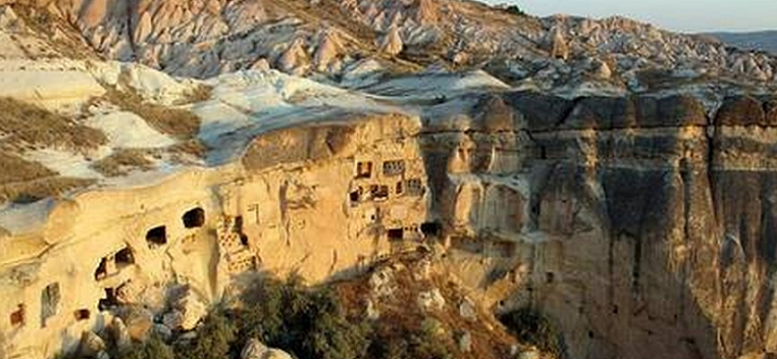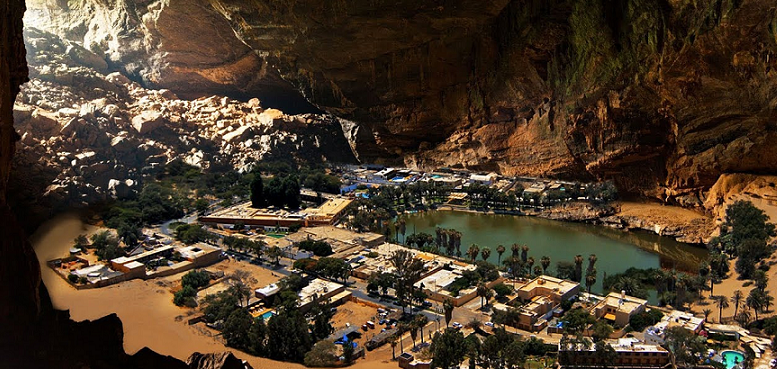
Beneath our feet, there exists a mysterious and intriguing world that few of us ever get to see – the world of underground cities. From ancient underground dwellings to modern-day metropolises, these hidden cities offer a unique and fascinating glimpse into human ingenuity, architecture, and culture. In this article we explore the history, design, culture, and future of underground cities, and discover what makes them such a captivating and enduring part of human civilization.
What Are Underground Cities?
Underground cities are human-made structures that are located completely or partially underground. They serve a variety of purposes such as shelter, protection, transportation, and more. They can be found all over the world and come in different shapes and sizes. Some are ancient, while others are modern-day creations.
They can be used for temporary or permanent habitation and can house entire communities or just a few individuals. They may also include various features and amenities, such as tunnels, ventilation systems, water supply, and lighting, that make them livable and functional. Underground cities are a fascinating and complex part of human history and ingenuity.
Historical Context of Underground Cities
The history of underground cities dates back thousands of years. Some of the earliest examples of underground cities can be found in regions such as Turkey, where ancient cities were carved into the rock to provide protection from invaders. The underground city of Derinkuyu in Turkey, for example, is estimated to have been built during the 8th century BCE and was able to house up to 20,000 people.
Another example is the underground city of Matera in Italy, which was carved out of limestone cliffs and inhabited by humans as far back as the Paleolithic era. In China, underground cities were built during the Han dynasty (206 BCE-220 CE) as a way to protect against enemy attacks. These cities included tunnels and rooms for storage, living, and worship.

In the Middle Ages, underground cities were often used as places of refuge during times of war or persecution. For example, the Cappadocia region in Turkey has dozens of underground cities that were used by early Christians to escape Roman persecution. In addition, during World War II, underground cities were constructed in places such as London, Moscow, and Berlin to provide shelter during bombing raids.
Today, underground cities continue to be constructed for various purposes. For example, the city of Montreal in Canada has an extensive underground city, also known as the “RÉSO,” which consists of a network of interconnected buildings and passageways. The purpose of this underground city is to provide shelter from the harsh winter weather and to provide a convenient transportation and shopping hub for residents and visitors.
In Japan, Tokyo’s underground city includes a vast network of tunnels and underground shops, as well as a nuclear fallout shelter capable of protecting over 5,000 people. Overall, the historical context of underground cities reveals a long-standing human desire for safety, shelter, and convenience.
Contemporary Underground Cities
Contemporary underground cities are modern-day structures that are built completely or partially underground. They serve a variety of purposes and are located all around the world. One of the most well-known examples of a contemporary underground city is the RÉSO in Montreal, Canada. This underground city is a vast network of tunnels and buildings that stretch over 32 kilometers and provides shelter from the harsh Canadian winters. The RÉSO includes shops, restaurants, offices, and even a university, making it a popular destination for both locals and tourists.
Another example of a contemporary underground city is Shanghai’s Tunnels, which were built in the 1930s to connect different parts of the city and provide a shelter during air raids. Today, the tunnels are used for a variety of purposes, including storage, transportation, and even as a location for fashion shows and events.

Tokyo’s underground cities are another example of contemporary underground cities. These cities consist of a network of tunnels and passageways that connect different parts of the city and provide a shelter during earthquakes, which are common in Japan. The underground cities of Tokyo also include a variety of amenities, such as shops, restaurants, and even a cinema.
While contemporary underground cities are often praised for their convenience and safety, there are also concerns about their environmental impact and sustainability. Building underground cities requires significant resources and energy, and some experts worry about the potential negative effects on the surrounding ecosystem. However, proponents argue that underground cities can also help to reduce congestion and pollution in urban areas, making them an important solution to the challenges of modern urbanization.
Design and Architecture of Underground Cities
Designing and constructing underground cities poses a number of unique challenges. One of the main considerations in designing an underground city is ensuring adequate ventilation and lighting. Without natural light and fresh air, underground spaces can quickly become oppressive and claustrophobic. To address this, underground cities often incorporate ventilation and lighting systems, such as air ducts and skylights, to provide a comfortable living and working environment.
Another important consideration in the design of underground cities is the structural integrity of the underground space. Since underground spaces are subject to different stresses than above-ground structures, architects and engineers must take into account factors such as soil stability and groundwater pressure. To ensure the safety and stability of underground cities, specialized construction techniques and materials are often used, such as reinforced concrete and tunnel-boring machines.
In terms of architecture, underground cities often incorporate unique features that are tailored to their specific purpose. For example, underground cities built for defense purposes may include hidden passageways and trapdoors, while those built for habitation may include features such as air purification systems and water treatment plants. In addition, underground cities often feature unique and innovative interior design, such as artificial skylights that mimic natural light, to create a more comfortable and appealing living and working environment.
Modern architecture has greatly influenced the design of underground cities. Many modern underground cities feature sleek and minimalist design, with clean lines and a focus on functionality. Sustainable design principles are also increasingly being incorporated into underground city design, with features such as solar power and green roofs becoming more common. The design and architecture of underground cities are complex and varied, reflecting the unique needs and challenges of living and working in subterranean spaces.

Culture and Society of Underground Cities
The culture and society of underground cities can differ significantly from that of above-ground communities. One of the most significant differences is the sense of isolation that can come from living or working underground. This isolation can be both physical and psychological, as underground spaces can feel cut off from the rest of the world. As a result, underground communities often develop a strong sense of self-sufficiency and interdependence, relying on each other for support and resources.
Another factor that can shape the culture and society of underground cities is the purpose for which they were built. For example, underground cities built for defense purposes may have a more militaristic culture, while those built for habitation may have a more communal and egalitarian culture. In addition, underground cities may be home to unique subcultures that develop in response to their unique environment, such as underground art and music scenes.
The physical layout of underground cities can also shape their culture and society. Underground spaces may be more constrained and utilitarian than above-ground spaces, which can lead to different social norms and values. For example, privacy may be less of a priority in underground communities, while cooperation and mutual support may be more highly valued.
The culture and society of underground cities reflect the unique challenges and opportunities of living and working in subterranean spaces. While underground cities can be isolating and challenging, they can also foster a sense of community and self-sufficiency that is not often found in above-ground communities.
Underground Cities Sustainability and Future
The sustainability and future of underground cities is a topic of growing interest and debate. On one hand, underground cities offer a range of potential benefits in terms of sustainability. For example, they can provide an efficient use of space, reduce congestion and pollution in urban areas, and provide a natural insulation against temperature extremes. In addition, underground cities can potentially help to mitigate the effects of climate change by providing a safe and secure shelter during extreme weather events.
However, there are also concerns about the sustainability of underground cities. Building underground cities requires significant resources and energy, and may have negative impacts on the surrounding ecosystem. In addition, there are concerns about the long-term livability of underground spaces, as they may be prone to issues such as poor air quality and water management.
To address these concerns, efforts are being made to develop more sustainable and environmentally-friendly underground cities. For example, there is a growing emphasis on green building techniques, such as incorporating renewable energy sources and using sustainable building materials. In addition, researchers are exploring ways to use natural light and ventilation to reduce the energy needs of underground spaces.
Looking to the future, underground cities may play an increasingly important role in urban development. As cities become more densely populated, underground spaces may offer a viable solution to the challenge of limited space. In addition, underground cities may become more common as a way to provide safe and secure shelter during natural disasters and other emergencies.
The sustainability and future of underground cities is a complex and evolving issue, with both potential benefits and challenges. As technology and research continue to advance, it will be important to find ways to maximize the benefits of underground cities while minimizing their environmental impact.
